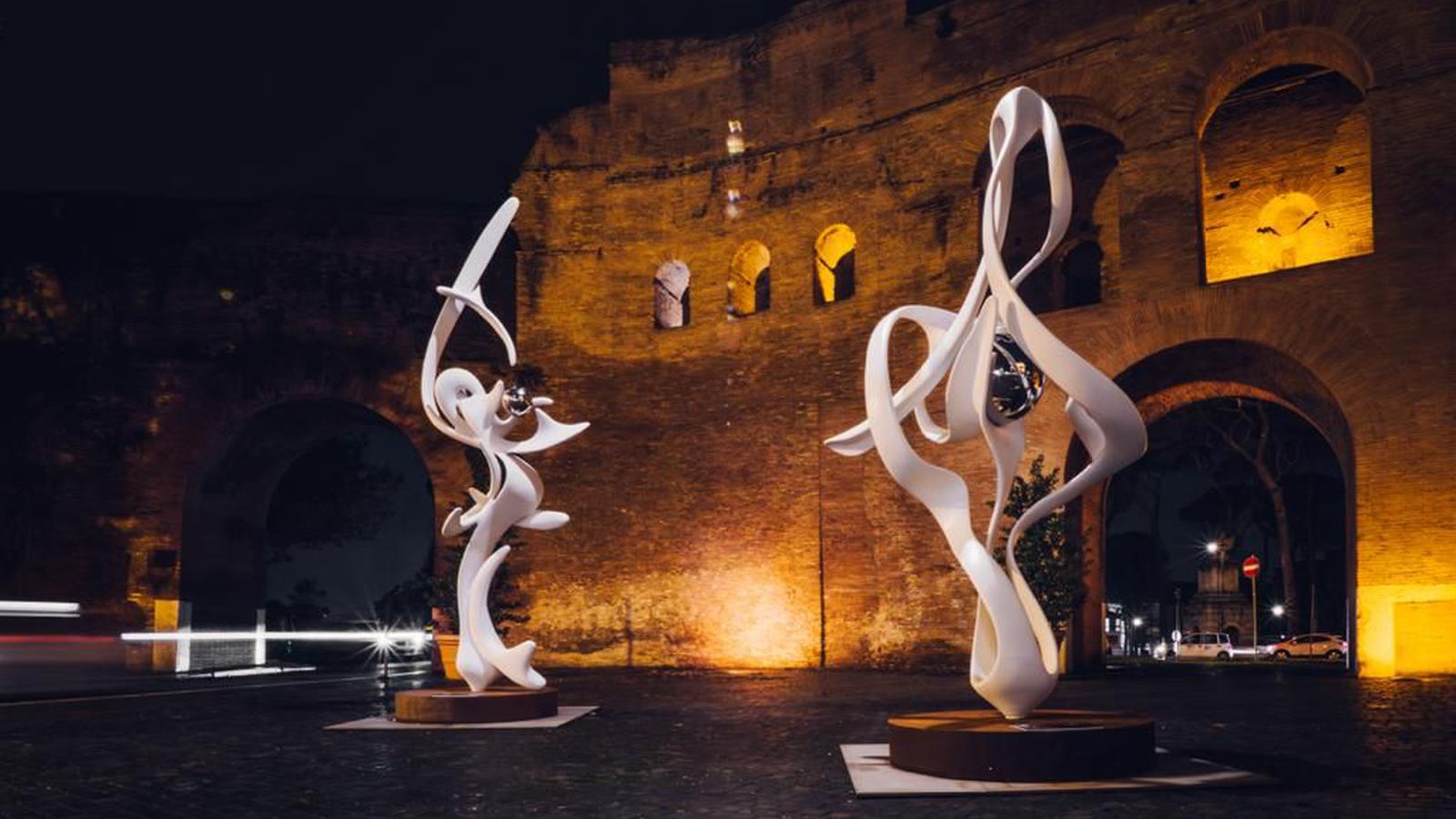After the exhibition in Pisa at the end of 2022 and the unique installation in Rome in 2023, Gianfranco Meggiato has returned to exhibit his works in a public context.
In fact, between December 1st, 2023 and February 1st, 2024, 11 works by the Venetian artist were exhibited in Rome, at Porta Pinciana and along the entire Via Veneto.
It is a true example of public art, with the sculptures placed in specific points of the city, well integrated with the rest of the urban landscape.
The title of the exhibition is
The Dioscuri return to Rome
, a symptom of the artist and curator Dimitri Ozerkov's desire to link contemporary art with the mythology of the ancient past. The myth narrates that one of the Dioscuri, twin sons of Zeus/Jupiter, was mortal; therefore, when Castor died, Pollux decided to share the gift of immortality with his brother. Thus, the Dioscuri became venerated precisely as a symbol of unity and brotherhood.
Gianfranco Meggiato's sculptures are made of aluminum, steel and bronze, of monumental dimensions, with a height between two and five meters. The exhibition itinerary starts from Porta Pinciana, where Il Volo and L'Attimo Fuggente are located. These are two vertical works painted the same color (white), very similar in shape, metaphorically indicating the Dioscuri Castor and Pollux.
The other 9 works follow one another in the space of one of the most important streets in Rome. They are all works that the artist defines as "introsculpture", since they aim to lead to internal reflection, to asking questions about society and man's role in it and therefore in the world.
Gianfranco Meggiato himself underlined the importance of this exhibition as a message of hope for humanity in this particularly difficult period. The metaphor that links the narrative to contemporaneity is that, such as Castor and Pollux, brothers different by nature but who managed to find a great unity, the humanity can stop and reflect on the value of those who we consider different, in order to try to recognize it not as an element of danger but of enrichment.
GIANFRANCO MEGGIATO RETURNS TO EXHIBIT HIS WORKS IN PUBLIC SPACE.
“THE DIOSCURI RETURN TO ROME” – PERSONAL EXHIBITION BY GIANFRANCO MEGGIATO
FEBRUARY, 02 • 2024
